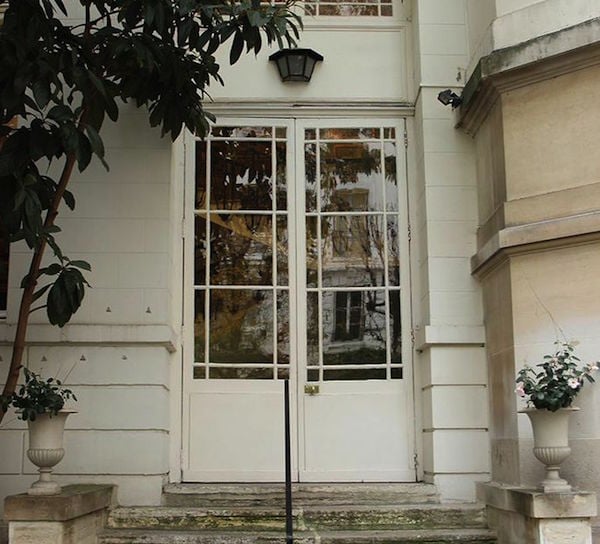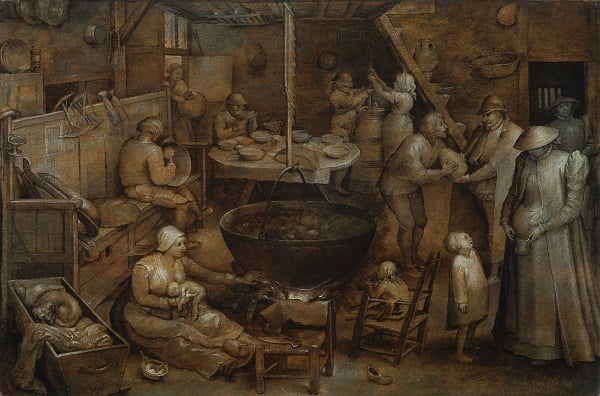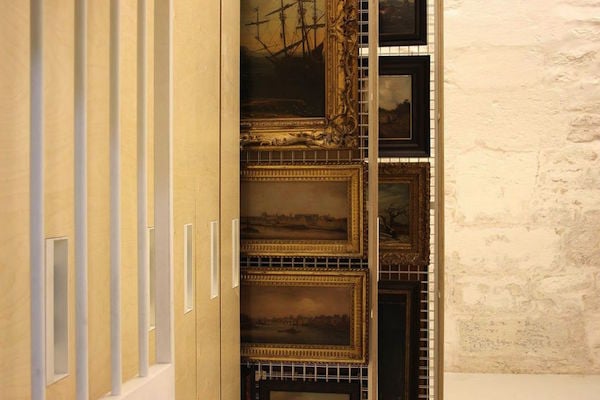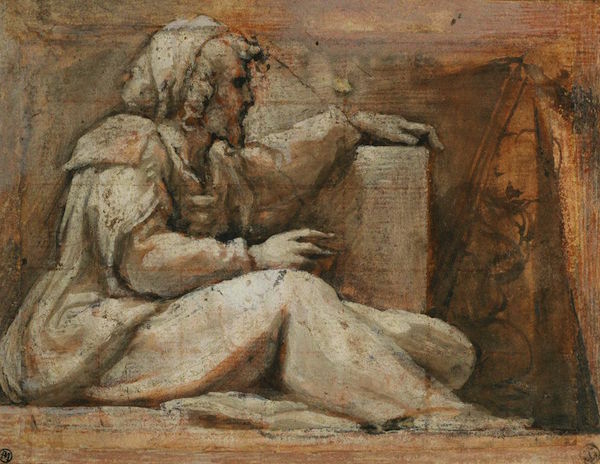Art & Exhibitions
Discover Fondation Custodia, Paris’s Secret Trove of Old Master Drawings
Get up close and personal with Leonardo.

Get up close and personal with Leonardo.

Lorena Muñoz-Alonso


Entrance to the Fondation Custodia in Paris
Photo: Courtesy Fondation Custodia
Tucked away behind the Assemblée Nationale in Paris, a discreet art foundation keeps a phenomenal collection of historical drawings.
Located in the 18th-century Hôtel Turgot, the Fondation Custodia was established by the renowned Dutch connoisseur and collector Frits Lugt back in 1947. But for too long, it has remained one of the capital’s best-kept secrets of the capital. Things are now changing, and the foundation is trying to place itself more firmly on the art map.
This new chapter is spearheaded by director Ger Luijten, who took up the helm of the foundation in 2010, after leaving Amsterdam’s Rijksmuseum, where he has served as head of prints and drawings since 2001. (The Rijksmuseum ventured into new territory recently when it exhibited photography for the first time—see Rijksmuseum Exhibits Photography for the First Time–For Real?)
Frits Lugt, a Self-Taught Visionary
The collection amassed by Lugt—now managed and bolstered by Luijten— is nothing short of breathtaking, encompassing over 7,000 Old Master drawings, 30,000 prints, and 220 paintings. And the roster of artists included in it reads like an art history encyclopedia: Leonardo da Vinci, Albrecht Dürer, Raphael, Rembrandt, Peter Paul Rubens, to name but a few.

Pieter Brueghel the Elder, Visit To the Tenant Farmer (1567)
Photo: © Fondation Custodia, Frits Lugt Collection, Paris.
“Lugt was self-taught, so he did not have an academic approach but, rather, an intellectual and visual approach to collecting,” Luijten told artnet News, explaining the breadth of Lugt’s trove.
Lugt’s focus was on Dutch, French, Italian, and German drawings, dating from the 15th to the late-18th centuries, with a particular emphasis on landscapes and quotidian scenes. The collection also includes over 40,000 artists’ letters including items penned by Dürer, Rembrandt, Michelangelo, and Henri Matisse, among others.

Paintings stored at the foundation
Photo: Courtesy Fondation Custodia
Given the fragile nature of these priceless works on paper, the Fondation Custodia is a study collection, rather than a museum open to the public. But the works are accessible by everybody, and can be viewed and examined by appointment. Do you fancy seeing a drawing by da Vinci without a protective frame, right in front of you? At Fondation Custodia you can.
“We are open to everybody, no matter their level of expertise.” Luijten told artnet News as he opened the vault where these historical treasures are stored. “Our ambition is to become Paris’s ‘house of drawing.’”
A Study Room with a Temporary Exhibition Program
Since last year, the Fondation Custodia also hosts temporary exhibitions. These are open to the public in a separate area of the building, which operates like a regular museum.
Its current show, “Raphael, Titian, Michelangelo: Italian Drawings from the Städel Museum in Frankfurt (1430–1600),” is a superb selection of 90 Renaissance masterpieces from the collection of the Frankfurt museum, curated by Joachim Jacoby.

Rembrandt, The healing of the Mother-in-Law of Saint Peter (ca. 1650s)
Photo: © Fondation Custodia.
The exhibition begins with a set of beautiful 15th-century drawings, still showing Gothic undertones, by the likes of Antonio Pisanello, Marco Zoppo, and Pesellino, all of them with religious themes.
In the following rooms, a spectacle of works by Michelangelo (Grotesque Heads and Other Studies, circa 1925), Raphael, Titian, Giorgio Vasari, Caravaggio, and Parmigianino, among many others, awaits the viewer. (artnet News’ own National Art Critic Ben Davis spent some time with Parmigianino at the Frick Collection last May—see his Cracking the Parmigianino Code at the Frick.)

Correggio, Seated Prophet with a Book Facing Right (ca. 1523)
Photo: Courtesy Fondation Custodia
Some of the works in the show are sketches and studies, while others are finished pieces. The techniques also vary—from chalk, pen, and ink on paper to silverpoint and charcoal—as do the themes, moving from religion to myths to observations of daily life, like in Pontormo’s beguiling Study of Two Male Figures Looking into a Mirror (circa 1520), in which two Narcissus-like figures gaze and caress each other.
Many works also feel surprisingly modern, like Tintoretto’s Study of the Head of Michelangelo’s Giuliano de Medici (circa 1545–1560), which depicts a head from an unusual viewpoint, rather different to the Renaissance’s regular frontal perspective.
In another part of the building, a program of temporary exhibitions devoted to contemporary drawings attest to Fondation Custodia’s goal to become the ultimate destination for lovers of drawing in Paris. Which such a dazzling collection, historically loaded venue, and ambitious program, they certainly have what it takes.